In-Network vs. Out-of-Network: The Difference in Care & Providers
In this blog we are going to break down what “out-of-network” really means, the cost implications, and how to make informed decisions when choosing a provider.

Did you know that one in seven privately insured patients have received a surprise medical bill, even after visiting an in-network hospital? In many cases, the bill comes from being treated by an out-of-network doctor they never chose.
Imagine going to the hospital, thinking your insurance will cover the visit, only to find out weeks later that part of all of your care will not be covered. This scenario happens every day across the United States, leaving patients confused, frustrated, and facing hundreds or thousands of dollars in unexpected healthcare expenses.
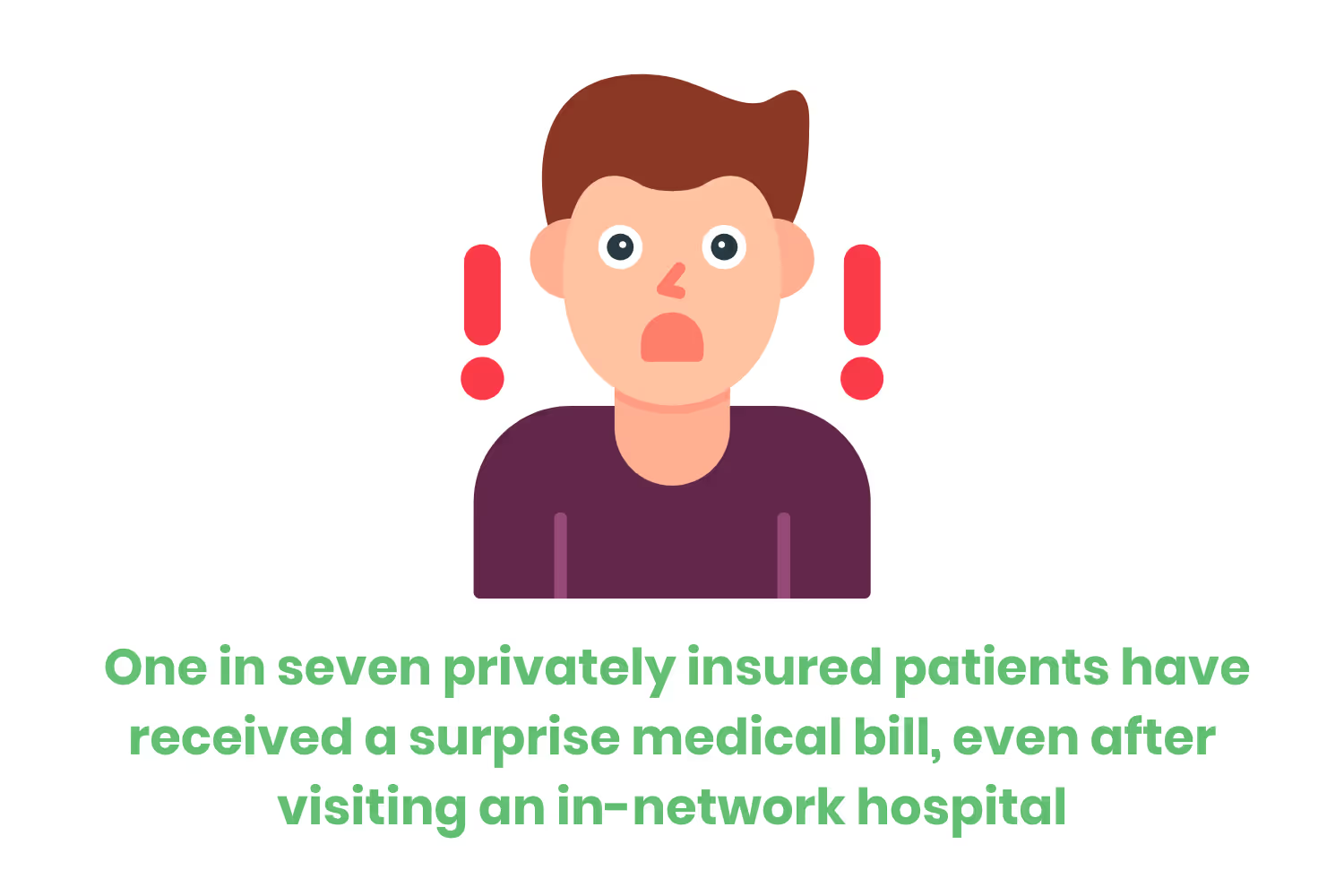
Unfortunately, many people don’t fully understand how insurance networks work until they receive a surprise bill. Terms like “in-network”, “out-of-network”, “balance billing”, and “allowed amount” can feel like a foreign language. Having a basic understanding of what they mean is key to avoiding financial surprises and making the right choice for your health plan.
In this blog, we are going to break down what “out-of-network” really means, the cost implications, and how to make informed decisions when choosing a provider.
What is an In-Network Provider?
An in-network doctor is a healthcare provider that has a contract with your health insurance plan. This includes your primary care doctor, specialists, hospitals, and diagnostic facilities. Under this agreement, the provider offers services at discounted rates, which means less out-of-pocket costs compared to seeing an out-of-network provider.
Being in-network helps make healthcare more affordable and protects patients from unexpected bills because the provider has agreed to accept the insurer’s negotiated rates. In-network providers can include your primary care doctor, specialists like a cardiologist or dermatologist, hospitals, urgent care centers, and diagnostic facilities like labs or imaging centers.
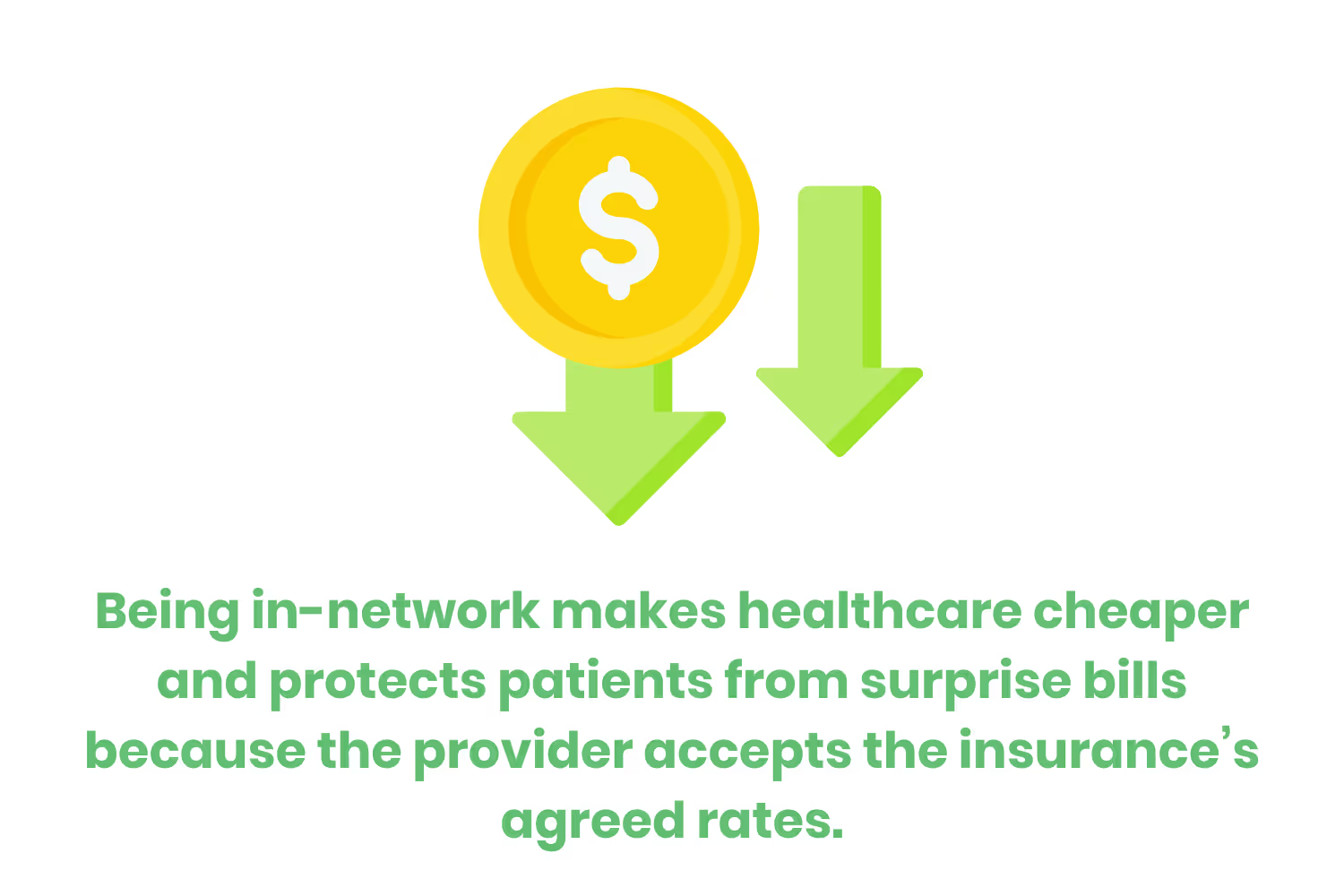
How does an in-network provider affect your healthcare costs?
Visiting an in-network provider helps lower your healthcare expenses, this means the care you get from primary care providers or specialists in the in-network health system usually comes with a lower copay and reduced out-of-pocket costs. Understanding the difference between in-network and out-of-network care is important for avoiding surprise bills.
This is because the provider has a contract with your insurance, which allows patients to enjoy reduced copays, deductibles, and coinsurance. Insurance also covers a portion of the bill, lowering overall health care expenses and helping avoid the surprise expenses often associated with out-of-network care.
What types of services do in-network providers offer?
We briefly touched on who can be included under in-network providers, but let’s discuss what services are covered. The most common services fall under preventive care, which can be annual exams, vaccinations, and routine screenings. Other services include specialist visits, diagnostic tests, and certain emergency services. Some of these may require prior authorization, so it is important to check with your insurance beforehand.

How to find an in-network provider?
So how do you find which providers are in-network? There are a few different avenues. The most common is to call your insurance company’s customer service,where you can get live information on who is covered, or check the insurance card for the phone number and website to look up in-network providers. Many insurers also have online directories or apps that can easily display who is in-network. It is important to remember that just because a facility is covered doesn’t mean every health care provider there is in-network. Always verify that both the facility and physician are covered to avoid any unnecessary bills at your door.
What is an Out-of-Network Provider?
Now that you have a solid understanding of what an in-network provider is, let's dive into out-of-network providers.
An out-of-network provider is a healthcare provider that does not have a contract with your health insurance plan. Without a negotiated rate, these providers set their own fees, which are typically higher than in-network rates. As a result, insurance may not cover out-of-network care, leaving you responsible for paying the full price or having to pay the difference between what the insurance covers and what the provider charges.
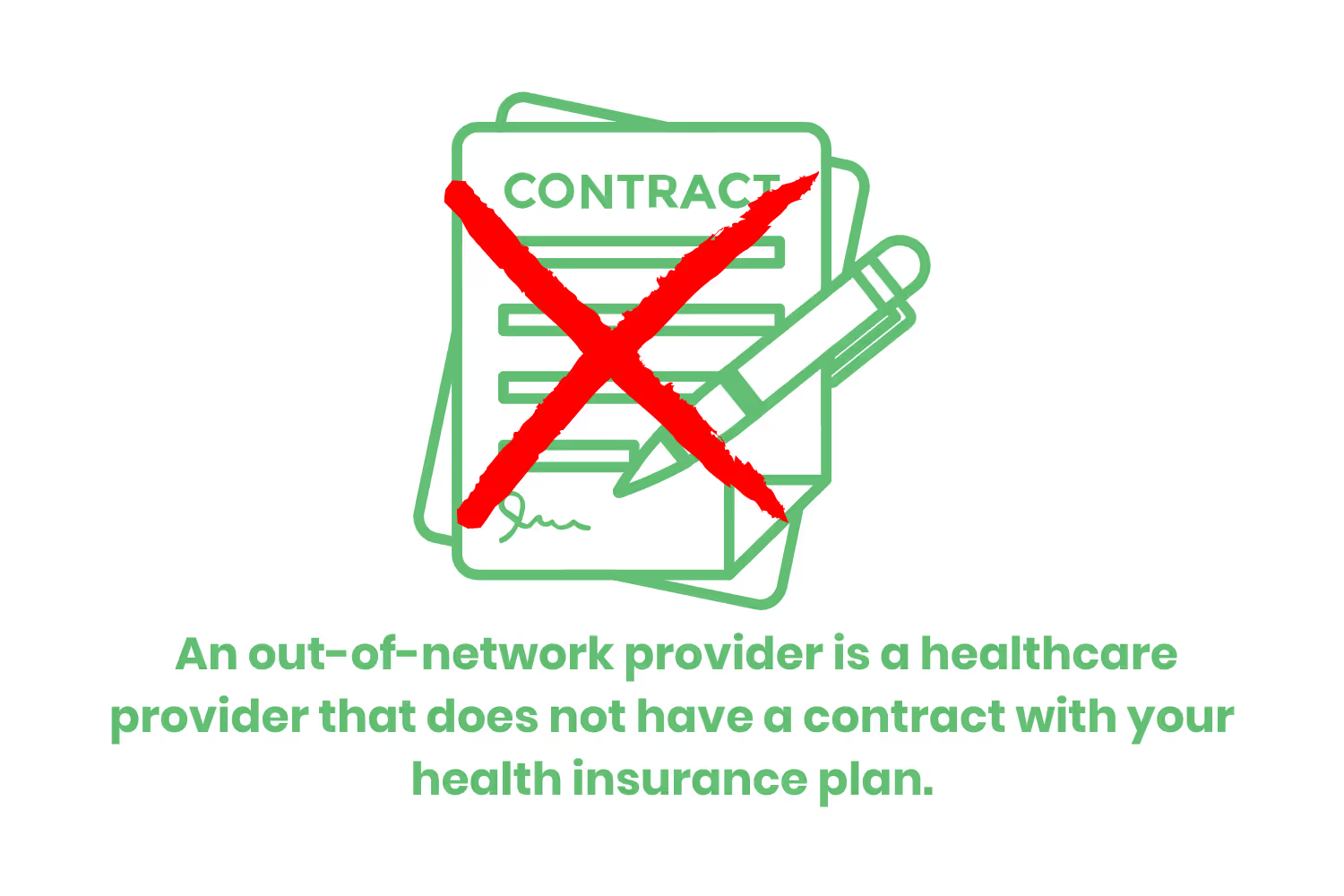
How is out-of-network care billed differently?
For in-network care, your provider sends the bill directly to your insurance company, and you pay the remaining balance after coverage. Out-of-network billing works differently, and the process varies by state. In some states, the provider sends the bill straight to the patient,skipping the insurance company entirely. In others, the provider sends the bill to your insurer first to see if they cover anything, then sends the rest, or the entire amount, back to the patient.
What are the risks of using an out-of-network provider?
Besides just paying extra for a service, there are other risks to using an out-of-network provider. We already discussed the higher costs, but those costs can come with unpredictable bills. In most situations, office staff will not know the exact costs and may only know an estimate. If the estimate is off, the bill can end up much higher than you budgeted. Out-of-network care also involves more paperwork and a longer claim process.

What are the Out-of-Pocket Costs for In-Network vs Out-of-Network?
When it comes to healthcare, your out-of-pocket costs can vary greatly depending on whether you see an in-network or out-of-network provider.
In-network providers have a contract with your insurance company, which means:
- Lower deductibles before insurance starts paying
- Fixed copays for visits or procedures
- Coinsurance calculated on discounted rates
- Annual out-of-pocket maximums that cap your spending
Out-of-network providers don’t have a contract with your insurance company, so:
- Deductibles are higher or separate from in-network
- Coinsurance is often much higher
- Some plans don’t cap yearly out-of-pocket costs
- You may be responsible for paying the full price or having to pay the difference between what insurance covers and what the provider charges.
- Check your plan’s network out-of-network coverage and out-of-network benefits to understand how much you will pay.
How Do Insurance Plans Handle In-Network and Out-of-Network Providers?
Insurance plans give better benefits for in-network care because they’ve negotiated lower rates with those set providers.
With in-network providers, the insurance company covers a large portion of the bill due to negotiated rates, which means the patient pays less.
Out-of-network providers are where it gets a little messy because billing is less standardized and can vary by insurer and state. Depending on the insurance plan, the insurer may pay a small portion of the bill, with the remainder sent to the patient. There are some plans, like HMO plans, that usually don’t cover out-of-network care except in emergency situations, while PPOs may offer partial coverage but at often higher premiums.
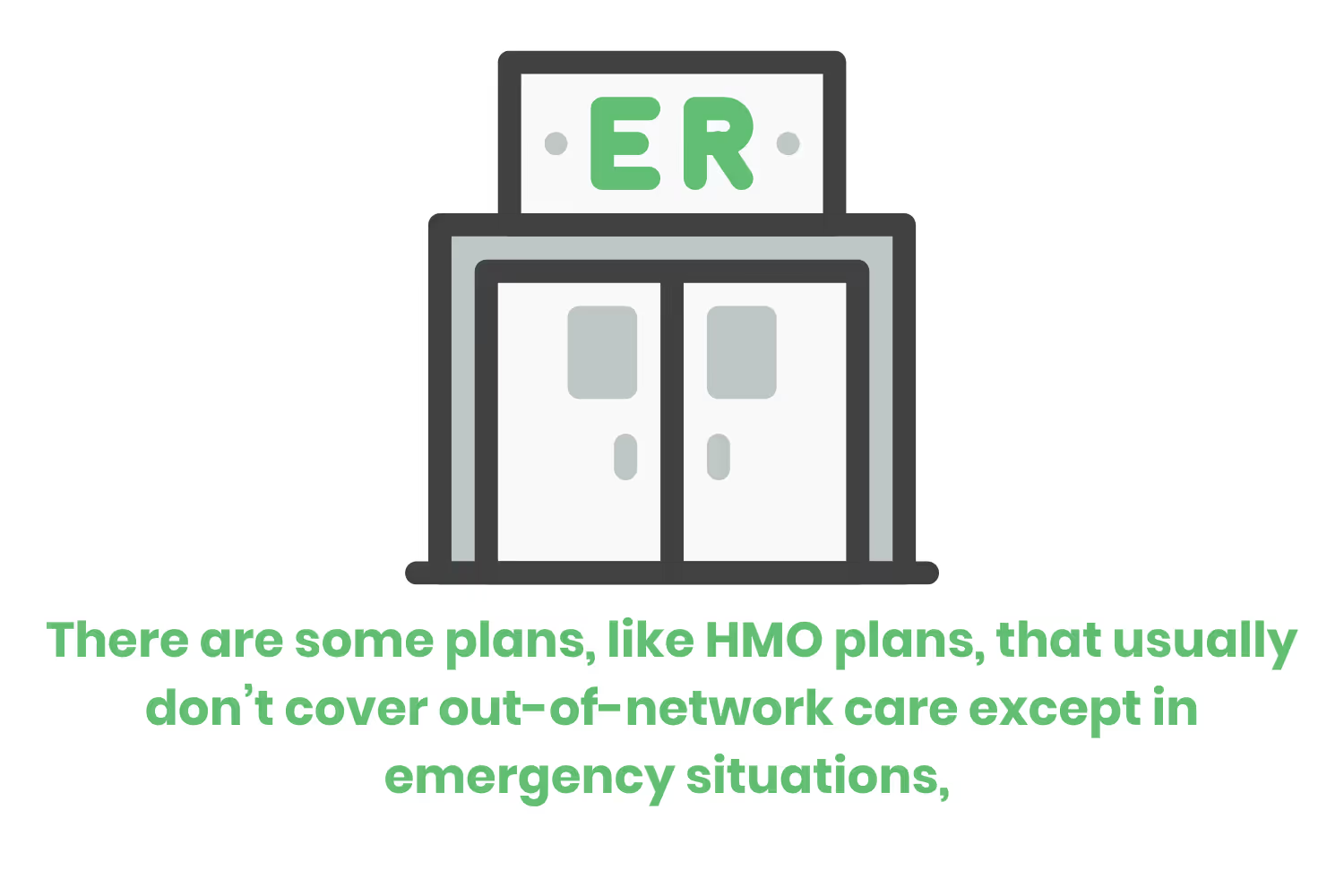
What is the Provider Network and Why is it Important?
We have talked a lot about what is in or out of the network, but let's identify what a provider network is. A health insurance network is a group of providers who have contracts with your insurance provider, including doctors, hospitals, and facilities.
These contracts set the discounted rates for services, helping patients save on health care by getting care from a network of trusted providers, and ensuring pricing stays consistent.
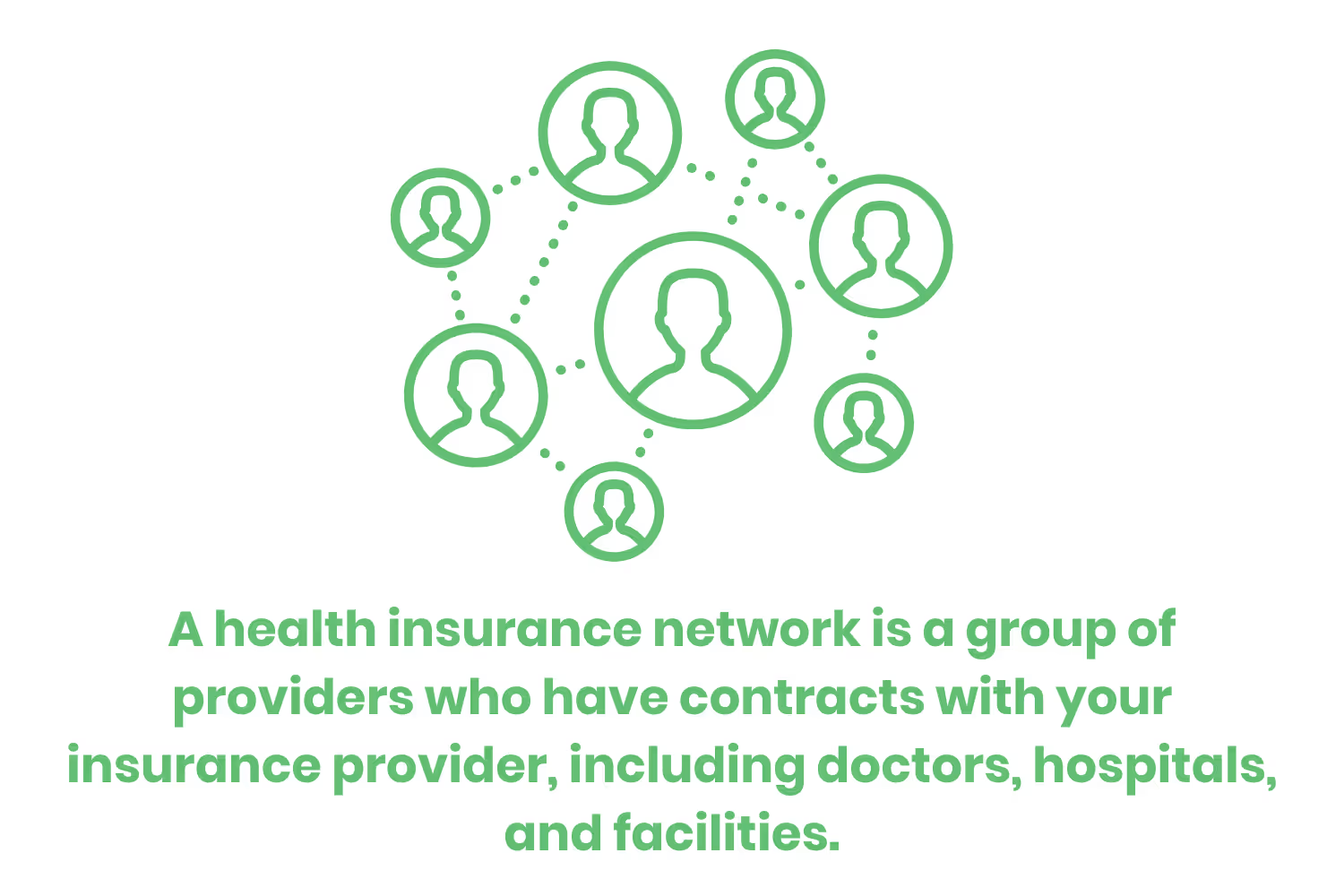
Staying in a network is one of the easiest ways to save on health care costs. Networks are typically created based on factors like location, specialties, and quality standards.
Being aware of your plan’s provider network is important because seeing an in-network provider generally means lower costs, smoother billing, and predictable coverage, while going out-of-network can result in higher bills and more complicated claims.
How to Make an Informed Choice: In-Network vs Out-of-Network
When trying to decide whether to use an In or Out of network provider it is important to be informed. So when deciding, here's what you should weigh:
- Cost: In-network is almost always the cheaper option.
- Access: Some specialists may only be available out-of-network, leaving not much of a decision if the appointment is necessary.
- Coverage: Check to see what your plan covers, especially if you are considering an out-of-network provider.
- Urgency: Emergency care is often covered at in-network rates, even if the provider is out-of-network. It is advised to find emergency rooms near you that are covered to ensure a smooth process.

Conclusion
Understanding the difference between in-network and out-of-network providers is essential for avoiding unexpected medical bills. In-network care providers can save money on health care expenses and reduce surprise bills, while out-of-network care can be expensive and complicated. Always check your health plan, confirm provider status, and understand your out-of-network costs before making appointments.
Emphasize your product's unique features or benefits to differentiate it from competitors
In nec dictum adipiscing pharetra enim etiam scelerisque dolor purus ipsum egestas cursus vulputate arcu egestas ut eu sed mollis consectetur mattis pharetra curabitur et maecenas in mattis fames consectetur ipsum quis risus mauris aliquam ornare nisl purus at ipsum nulla accumsan consectetur vestibulum suspendisse aliquam condimentum scelerisque lacinia pellentesque vestibulum condimentum turpis ligula pharetra dictum sapien facilisis sapien at sagittis et cursus congue.
- Pharetra curabitur et maecenas in mattis fames consectetur ipsum quis risus.
- Justo urna nisi auctor consequat consectetur dolor lectus blandit.
- Eget egestas volutpat lacinia vestibulum vitae mattis hendrerit.
- Ornare elit odio tellus orci bibendum dictum id sem congue enim amet diam.
Incorporate statistics or specific numbers to highlight the effectiveness or popularity of your offering
Convallis pellentesque ullamcorper sapien sed tristique fermentum proin amet quam tincidunt feugiat vitae neque quisque odio ut pellentesque ac mauris eget lectus. Pretium arcu turpis lacus sapien sit at eu sapien duis magna nunc nibh nam non ut nibh ultrices ultrices elementum egestas enim nisl sed cursus pellentesque sit dignissim enim euismod sit et convallis sed pelis viverra quam at nisl sit pharetra enim nisl nec vestibulum posuere in volutpat sed blandit neque risus.
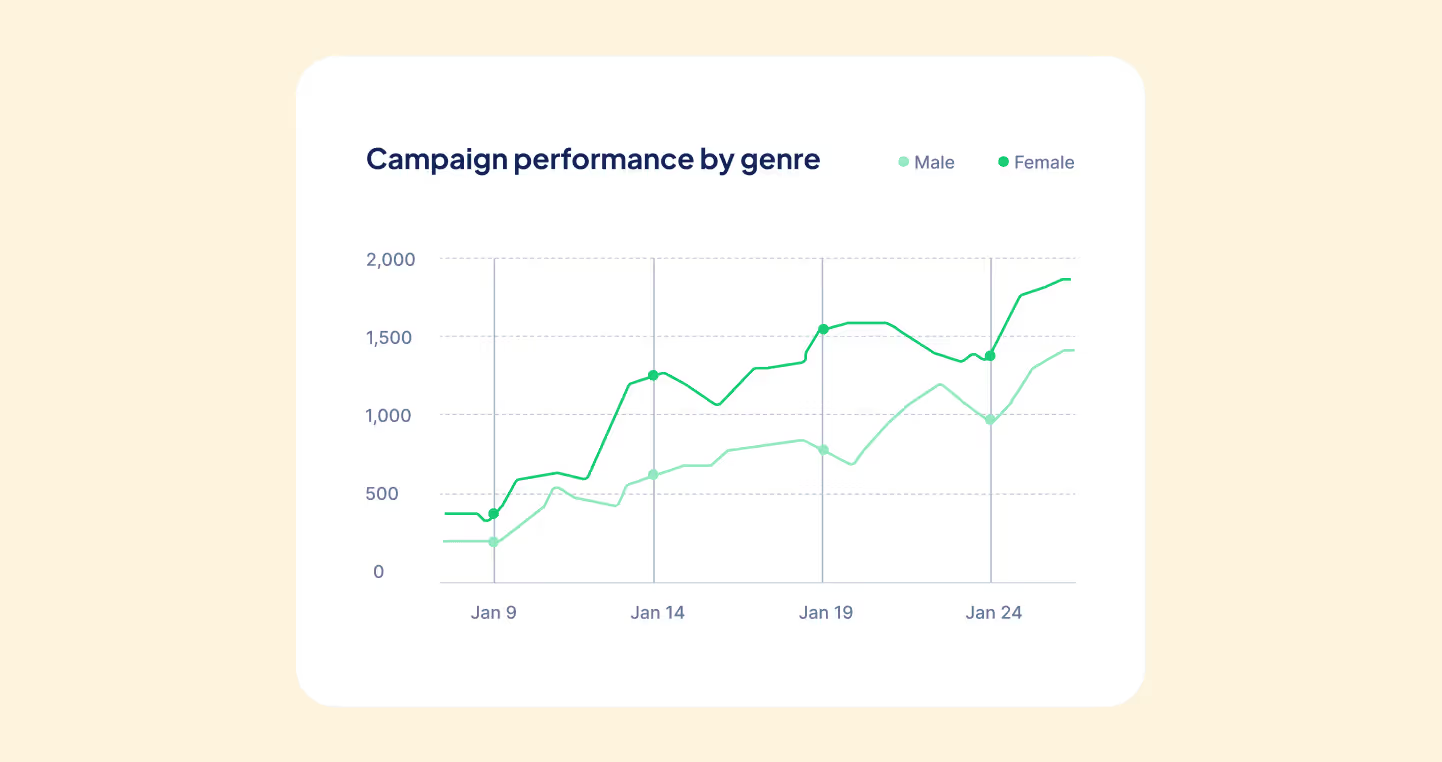
Use time-sensitive language to encourage immediate action, such as "Limited Time Offer
Feugiat vitae neque quisque odio ut pellentesque ac mauris eget lectus. Pretium arcu turpis lacus sapien sit at eu sapien duis magna nunc nibh nam non ut nibh ultrices ultrices elementum egestas enim nisl sed cursus pellentesque sit dignissim enim euismod sit et convallis sed pelis viverra quam at nisl sit pharetra enim nisl nec vestibulum posuere in volutpat sed blandit neque risus.
- Pharetra curabitur et maecenas in mattis fames consectetur ipsum quis risus.
- Justo urna nisi auctor consequat consectetur dolor lectus blandit.
- Eget egestas volutpat lacinia vestibulum vitae mattis hendrerit.
- Ornare elit odio tellus orci bibendum dictum id sem congue enim amet diam.
Address customer pain points directly by showing how your product solves their problems
Feugiat vitae neque quisque odio ut pellentesque ac mauris eget lectus. Pretium arcu turpis lacus sapien sit at eu sapien duis magna nunc nibh nam non ut nibh ultrices ultrices elementum egestas enim nisl sed cursus pellentesque sit dignissim enim euismod sit et convallis sed pelis viverra quam at nisl sit pharetra enim nisl nec vestibulum posuere in volutpat sed blandit neque risus.
Vel etiam vel amet aenean eget in habitasse nunc duis tellus sem turpis risus aliquam ac volutpat tellus eu faucibus ullamcorper.
Tailor titles to your ideal customer segment using phrases like "Designed for Busy Professionals
Sed pretium id nibh id sit felis vitae volutpat volutpat adipiscing at sodales neque lectus mi phasellus commodo at elit suspendisse ornare faucibus lectus purus viverra in nec aliquet commodo et sed sed nisi tempor mi pellentesque arcu viverra pretium duis enim vulputate dignissim etiam ultrices vitae neque urna proin nibh diam turpis augue lacus.



![[ANSWERED] What is a Long-Term Care (LTC) Pharmacy](https://cdn.prod.website-files.com/67e2b8210878abcba6f91ae6/68d687806a075a1cf64659b0_WhatisLongTermCarePharmacy_925.avif)
